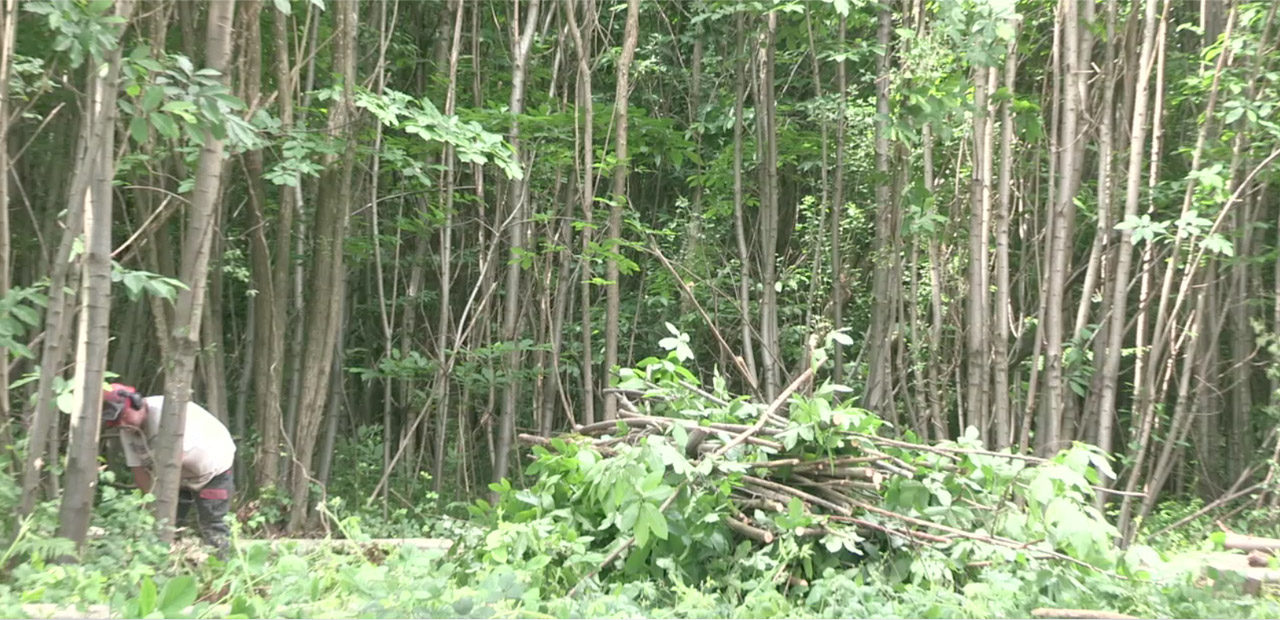Wildlife and the Environment
History | Management | Wildlife and the environment | Processing
Coppicing as a management regime is generally accepted as producing very high wildlife benefits, particularly when carried out on a large scale and with regular rotational cutting. The patchwork of areas of different aged woods produce a variety of habitats around which wildlife can move to find the perfect environment.
Coppice woods contain seed banks which remain dormant until the wood is cut, when the sudden increase in sunlight levels trigger germination. For the first three or four years after cutting, the woods are full of plant life, and the rich food sources benefit insects and songbirds, as well as providing an excellent habitat for reptiles, particularly slow worms which can often be seen basking on the edge of tracks. As the coppice grows and the canopy closes the light levels at ground level start to fall, and only taller plants such as broom can compete with the chestnut for light. After ten years or so only the most shade loving plants and woodland specialists adapted to low light levels can survive, until of course the coppice is cut again and the sudden increase in light levels triggers another explosion of growth Bluebells are the most iconic plant in the Torry Hill chestnut woods. In April and May newly cut cants are a sea of blue with hundreds of flowers per square metre. But they are not the only flowers to put on a show in spring. In some places wood anemone predominates, and in others there are hundreds of primroses, and other woodland plants such as yellow archangel. Rarities in the Torry Hill chestnut woodlands include autumn helleborines, herb paris and occasional appearances of the very splendid and nationally rare greater broomrape, a parasite on the broom which flourishes around fire sites in the newly cut coppice.
The early years of the coppice cycle provide excellent habitat for songbirds. The woods have a particularly large population of willow warblers, and the occasional nightingale. There are recent records of nightjars,and the older coppice is attractive to large numbers of woodcock in the winter, which appreciate the lack of disturbance and enjoy feeding in the soft soil and deep leaf litter.
Hares enjoy the shelter and varied diet provided by young coppice, but are occasionally responsible for damage to stocks when they eat the bark in harsh weather. Although more traditionally associated with hazel coppice it is not unusual to come across evidence of dormice.
Butterfly and moth species and numbers are recorded every year and data sent to national recording centres.
